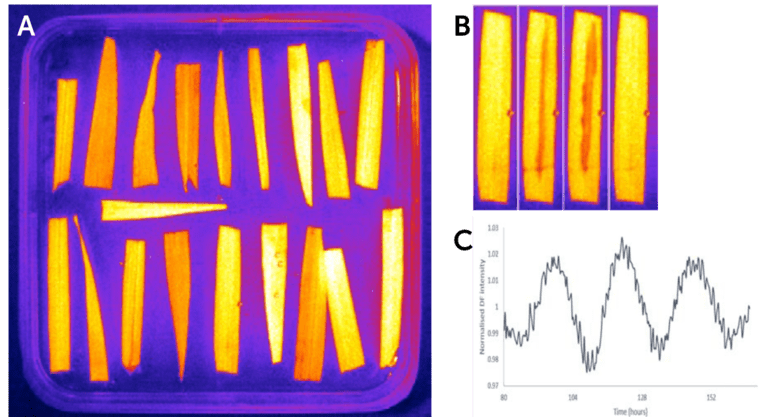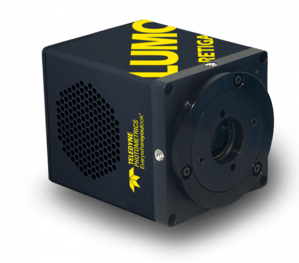Delayed Fluorescence Imaging
Dr. Anthony Hall
Anthony Hall Group, Earlham Institute, University of Norwich, UK
Background
The Anthony Hall group is a world-leading lab with a focus on understanding wheat genomics. Their work seeks to bridge the gap between traditionally used model plant organisms and crop species with real-world applications.
The biological circadian clock is the internal time-keeping mechanism within a living organism. It is entrained by external day-night cycles and is responsible for controlling a wide array of processes such as photosynthetic activity. A robust circadian rhythm is vital to overall plant fitness and controls many other factors such as flowering time and resistance to pathogen attack.
A valuable tool available to researchers who are investigating photosynthesis is to observe bioluminescence. The Anthony Hall group is interested in a form of bioluminescence called delayed fluorescence (DF), whereby photons of light absorbed by the plant are later re-emitted at a level proportional to the photosynthetic efficiency of the sample at that precise time. This measurement cycles with a circadian rhythm and can be used on any biological sample containing photosynthetic pigments. An advantage of DF over conventional luciferase experiments is that material can be used straight from the plant with no genetic modifications necessary.

wheat leaves (cv.Cadenza) with a 60 second exposure time. B) Images 6h, 12h, 18h, and 24h after perceived dawn show
the signal variation with the circadian rhythm. C) Normalized data for DF intensity over 3 days.
Challenge
DF has a very weak intensity compared to other forms of bioluminescence and requires long exposure times to capture all available signal. Image acquisition is triggered after a critical pause following lights-off to eliminate contamination from residual light and other forms of bioluminescence.
The primary challenge is to obtain a bright enough signal over several days for meaningful quantitative measurements of the oscillations to be made. Having a sufficient field of view for high throughput sample analysis is also important. Accuracy of camera shutter speed is essential for capturing all available DF signal without any noise from the light source turning off.
The previous technology used for delayed fluorescence measurements was based on expensive back-illuminated CCD cameras, which required cooling down to ~70°C to reduce dark current. The large pixels of these sensors also reduced resolution. These cameras significantly increase the cost of putting together and running a delayed fluorescence experiment.
Using the Retiga LUMO camera, we’re able to get high quality images as with a back-illuminated CCD for a fraction of the price, and without the inconvenience of cooling to minus 70 degrees.
Dr. Anthony Hall
Solution
The Retiga LUMO CCD camera from Teledyne Photometrics is precisely engineered to have low dark current at long exposure times, low noise readout, and to account for hot pixels. As a result, the Retiga LUMO provides equal or better performance than a back-illuminated CCD for a fraction of the cost. What's more, the larger sensor with smaller pixels improves both field of view and resolution over the previous technology.
"With the Retiga LUMO, we get consistent image quality, no extra cooling is needed and we no longer need to wait an hour for the cameras to cool down," says Dr. Anthony Hall, head of plant genomics."We were able to use the same protocols in the Micro-Manager software, making it easy to get the cameras up and running."
Learn More About The Retiga LUMO
Download This Customer Story